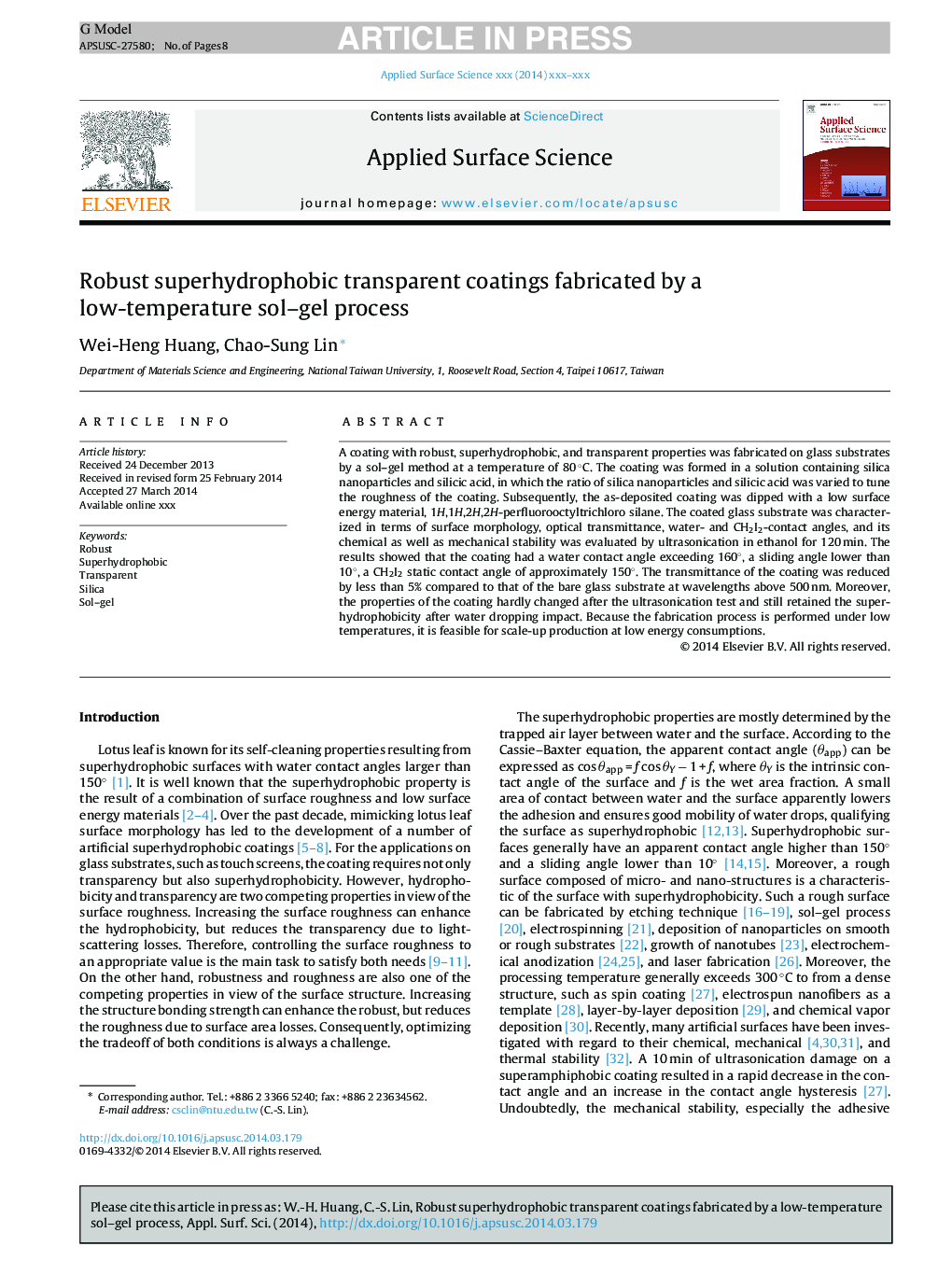| Article ID | Journal | Published Year | Pages | File Type |
|---|---|---|---|---|
| 5350360 | Applied Surface Science | 2014 | 8 Pages |
Abstract
A coating with robust, superhydrophobic, and transparent properties was fabricated on glass substrates by a sol-gel method at a temperature of 80 °C. The coating was formed in a solution containing silica nanoparticles and silicic acid, in which the ratio of silica nanoparticles and silicic acid was varied to tune the roughness of the coating. Subsequently, the as-deposited coating was dipped with a low surface energy material, 1H,1H,2H,2H-perfluorooctyltrichloro silane. The coated glass substrate was characterized in terms of surface morphology, optical transmittance, water- and CH2I2-contact angles, and its chemical as well as mechanical stability was evaluated by ultrasonication in ethanol for 120 min. The results showed that the coating had a water contact angle exceeding 160°, a sliding angle lower than 10°, a CH2I2 static contact angle of approximately 150°. The transmittance of the coating was reduced by less than 5% compared to that of the bare glass substrate at wavelengths above 500 nm. Moreover, the properties of the coating hardly changed after the ultrasonication test and still retained the superhydrophobicity after water dropping impact. Because the fabrication process is performed under low temperatures, it is feasible for scale-up production at low energy consumptions.
Related Topics
Physical Sciences and Engineering
Chemistry
Physical and Theoretical Chemistry
Authors
Wei-Heng Huang, Chao-Sung Lin,
